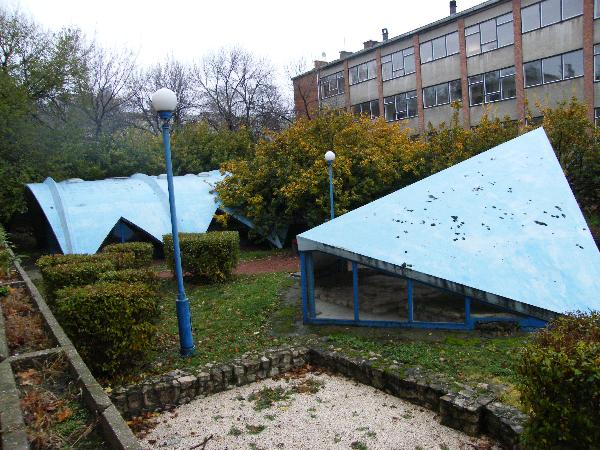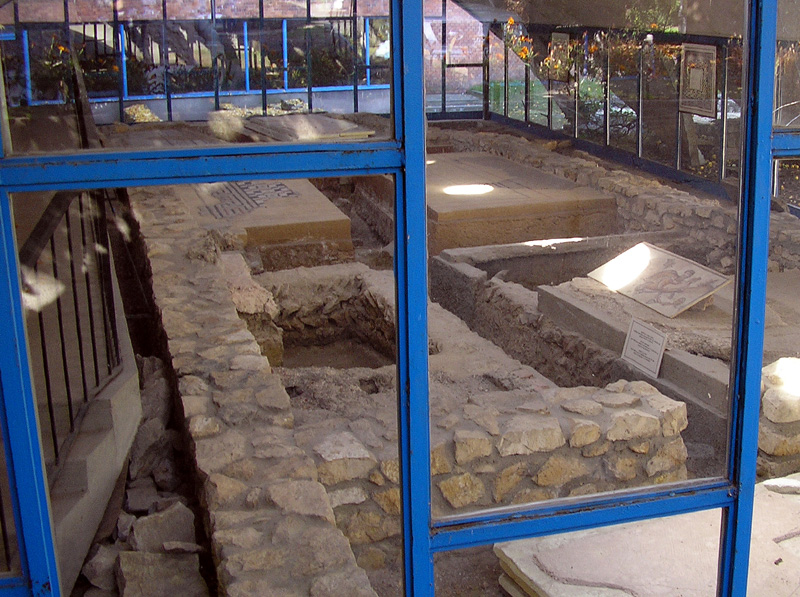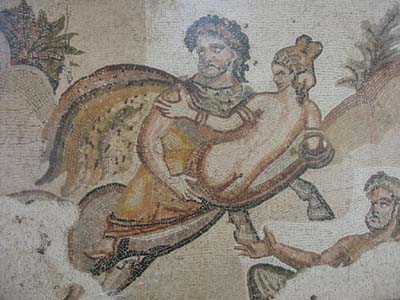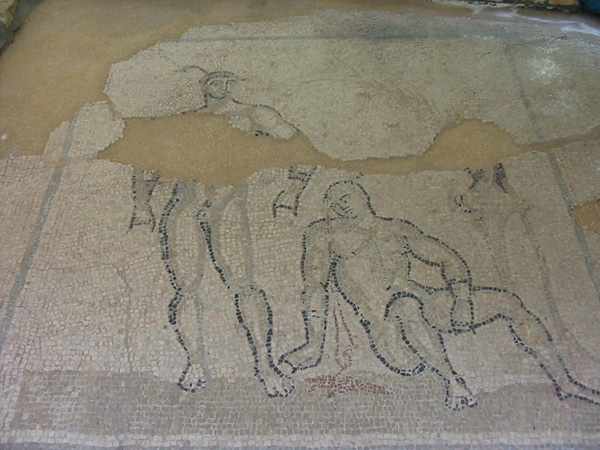

The Hercules Villa
The Hercules Villa is located to the south of the civilian town of Aquincum, in Óbuda. Dating from Roman times, this dwelling was one of a number uncovered during the archaeological excavations conducted in the 1950’s. It obtained its name from the floor mosaics depicting the myths of Hercules. The remnants of the villa can be found among the other ruins in the archaeological site, however the mosaics have been transferred into two protective buildings.
The site belongs to the Aquincum Museum.
Permanent exhibition: Coloured mosaic floors of the 2nd and 3rd centuries.


The Hercules Villa belongs to the row of decorated palaces, baths, sanctuaries and habitations that stood along the riverbank across from the Governor's Palace. They may be considered part of the governmental complex that belonged to the representative building of the Governor's Palace. They occupied the northeastern and northern edge of the former Military Town. These buildings housed provincial offices although the homes of high ranking administrators were also located here. One of these residences is the so-called Hercules Villa located in Meggyfa Street.
The central core of this building must have been built during the first half of the AD 2nd century. At the beginning of the third century, when most probably the official administration was moved to the "officers' houses" in the Military Town, this building was expanded, equiped with floor-heating and decorated with mosaic floors. In the three adjacent habitation rooms, most of these mosaic floors collapsed into the channels of the hypocaust heating system. Only details of the Pannonian made geometric framing motif survived in the two southern rooms, while in the third, the greater half of an emblem was recovered. This section, showing the fight between Hercules and Nessos the Centaur, formed a central field in the floor. It is likely that this mosaic was made in an Alexandrian workshop. To date, it is the only known imported mosaic not only in Aquincum but anywhere in Pannonia. The floor of the tablinum shows a merry and tipsy Dionysean thiasos. In the surviving section, Amor offers a bunch of grapes to an approaching tigress. Mosaic floors decorated the separate baths as well. The mosaic that covered the apodyterium floor is almost intact. It shows a pair of boxers. The winner assumes a victorious posture flexing his muscles, after his bloody headed opponent collapsed following a knock-out. The walls were decorated with frescoes. Door- and windowframes, stucco niches and sills were ornamented with flowers. Reconstructions of some of the most typical motifs are on exhibit in the tablinum. Excavations of the highest quality buildings in Aquincum and Pannonia Inferior, although are far from all have been excavated, have already yielded numerous mosaic floors, wall paintings and stucco remains. Of all these, in situ examples are exhibited in the Meggyfa Street Hercules Villa.
Since the mid 1980's, however, the restoration of mosaic floors and wall paintings brought to light in another building in Folyamör street has also been carried out, to the extent possible given limited finances. Most of the restored specimens are on display in the permanent exhibit of the Aquincum Museum.
Opening hours:
15 April - 31 October: after registration. Visitable only in groups, on request with guidance!
1 November - 14 April: CLOSED
Admission: Free Guided tours: German, English, Hungarian
Information: (+36-1) 250-1650
Transportation:
With the 86, 6 and 106 bus lines to the Bogdán Street end stop.
Official website
CACHE:
The box is not within the museum!
Please, do not upload the photo of cache and hiding place!
Good luck, and enjoy the cache! Happy caching!
Paleo.team
version 1.0.0
